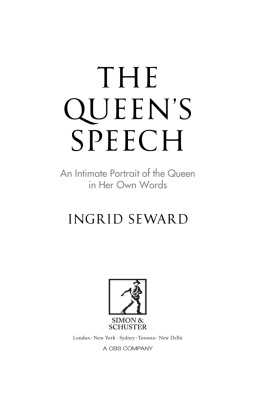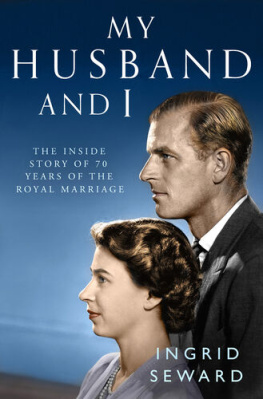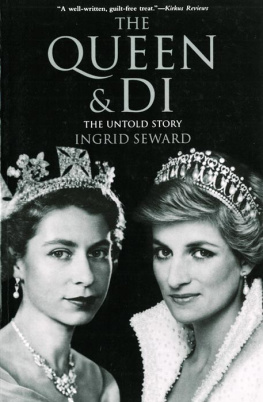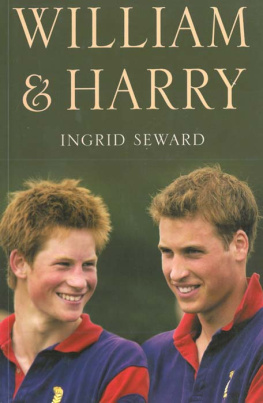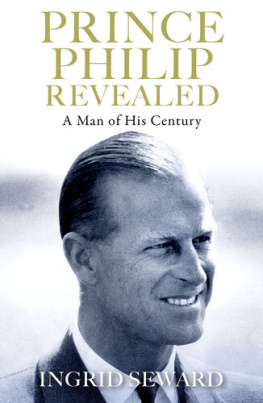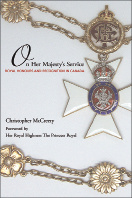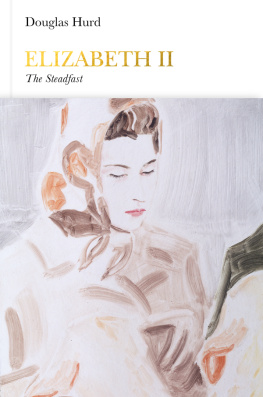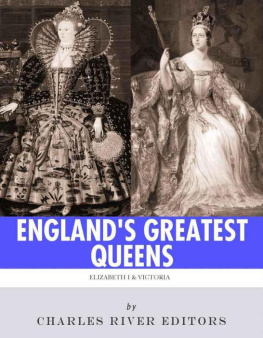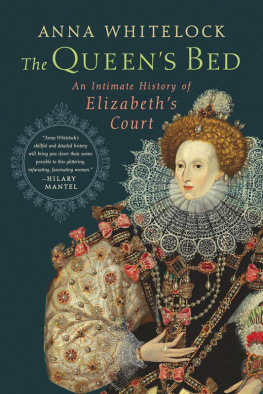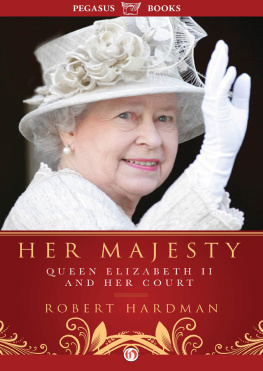Ingrid Seward is editor-in-chief of Majesty magazine, the monthly royal journal covering all aspects of royal families from around the world. Ingrid has written more than a dozen books on the British royal family and is internationally acknowledged as a leading expert. She has been making worldwide TV and radio appearances for almost thirty years and is able to write about her subjects while knowing many of them personally. Her previous books include the bestsellers Diana, William & Harry, The Queen and Di and The Last Great Edwardian Lady. Her most recent book is A Century of Royal Children.
First published in Great Britain by Simon & Schuster UK Ltd, 2015
This paperback edition published by Simon & Schuster UK Ltd, 2016
A CBS COMPANY
Copyright 2015, 2016 by Ingrid Seward
This book is copyright under the Berne convention.
No reproduction without permission.
All rights reserved.
The right of Ingrid Seward to be identified as the author of this work has been asserted by her in accordance with sections 77 and 78 of the Copyright, Designs and Patents Act, 1988.
Simon & Schuster UK Ltd
1st Floor
222 Grays Inn Road
London WC1X 8HB
www.simonandschuster.co.uk
Simon & Schuster Australia, Sydney
Simon & Schuster India, New Delhi
The author and publishers have made all reasonable efforts to contact copyright-holders for permission, and apologise for any omissions or errors in the form of credits given. Corrections may be made to future printings.
A CIP catalogue record for this book is available from the British Library.
ISBN: 978-1-4711-5098-3
Ebook ISBN: 978-1-4711-5099-9
Typeset in Sabon by M Rules
Printed and bound by CPI Group (UK) Ltd, Croydon, CR0 4YY

Simon & Schuster UK Ltd are committed to sourcing paper that is made from wood grown in sustainable forests and support the Forest Stewardship Council, the leading international forest certification organisation. Our books displaying the FSC logo are printed on FSC certified paper.
For Bella and Nou in memory of their father, my inspiration.
Contents
Chapter 1
HISTORY AND THE QUEEN
Each Christmas, at this time, my beloved father broadcast a message to his people in all parts of the world. Today I am doing this to you, who are now my people.
CHRISTMAS BROADCAST , 1952
P erhaps the most remarkable thing about Her Majesty Queen Elizabeth II is how hard it is to realise she is actually in her nineties. Her brain is still razor sharp, her skin is perfect. Her teeth are white and her smile, when she chooses to use it, is as wide and generous as ever. She moves like someone twenty years younger in that unmistakable Windsor gait that actress Helen Mirren perfected so well in her Oscar-winning role as the Queen in the 2006 film of the same name. Slightly bent forward, head down, with large purposeful strides. Since her birth in April 1926, the year of the General Strike, the world has changed beyond all recognition, but she seems remarkably unchanged and unchanging.
Her dedication and the efficiency with which she carries out her role as head of state are unsurpassed. While she wins no prizes for imagination, charisma or small talk, and was widely regarded as ill-educated as a child she spent just seven and a half hours a week with her governess she is the most reliable, unflappable, least complaining monarch in history. She has always enjoyed the regimented side of royal life and is a stickler for order she will notice the minutest detail. On one occasion during a parade, she spotted a guardsman fiddling and remarked, That man in the back rank, third man from the right, kept moving his fingers on his rifle. Why did he do that? Is he mad?
Her dogs, which she feeds herself, are fed in strict order: the eldest first and the youngest last. They wait for their names to be called out and, because of the strict hierarchy, there is never any fighting when this task is being performed by Her Majesty. Her love of horses and dogs is well documented and, at Windsor weekends, the talk is usually about animals. For a woman who is constantly surrounded by people, the natural world has played a large part in keeping her sane. With animals, she has no role to play and no dangerous words to stifle.
That is not to say that the Queen does not have her unguarded moments, and she has a wonderfully waspish sense of fun if she chooses to use it. Three days after her grandson Prince Williams engagement to Catherine Middleton was announced in November 2010, the Queen and Duke of Edinburgh were being entertained to lunch at Sheffield University by Sir Peter Middleton, former chairman of Barclays Bank and chancellor of the university. The Queen, who was seated next to Sir Peter, turned to him and said impishly, Any relation? When he replied in the negative, she then said, A little research perhaps?
Now, it would have been easy for him to let his guard drop, but being socially adept he knew however friendly the Queen might be, you cannot become overfamiliar yourself. Even her children bow to her when they come into a room; and a friend of Princess Anne, witnessing her take a telephone call from her mother, noticed she automatically stood up as she started talking.
In the Queens unchanging routine, any little mishap becomes an adventure and any situation a potential part in the play of her life. Her own brand of humour is delivered with impeccable timing, which comes from her years of public speaking. Her skill for mimicry is honed from observing and listening to the hundreds of characters she meets. A couple of years ago, an elegant and impeccably mannered American gentleman from Atlanta, Georgia, was introduced to Her Majesty at a reception at St Jamess Palace. He bowed low and informed the Queen in his deep southern drawl that he came from one of Her Majestys former colonies. The Queen replied that, indeed, she could tell from the way he was talking that he came from the southern states. Looking at her straight in the eye, he told her he had heard she was an excellent mimic and, before he lost his nerve, challenged her to have his accent perfected by the next day.
Without hesitating the Queen said that if he kept on talking the way he was, she would have his accent perfected before dinner.
Energetic and open-minded though she is, the Queen is still the person she always was. Controlled, unemotional, punctilious and dignified, it is difficult to understand what kind of woman she really is, and none of her biographers has successfully managed to penetrate her private world. Even the experienced BBC documentary-maker, Edward Mirzoeff, who produced Elizabeth R to mark the Queens fortieth anniversary of her accession to the throne, confessed that, after a whole year spent with her and her entourage, he still could not claim to know her. During that time, he lunched privately with the Queen, talked with her in her sitting room and sat with her while she had her portrait painted, as well as travelling with her to Sandringham and Balmoral.
Having spent more time with her in intimate circumstances than any of her biographers, he felt she remained a mystery. He admitted he came to know her mannerisms and style of her daily behaviour well, but never the woman herself. So is it possible to get to know and understand the Queen better than we do? Is there a way we can shed more light on her character, personality and interests?
Next page
